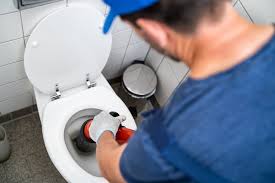Dealing with a clogged toilet is one of the most common and frustrating household problems. Whether it’s a minor blockage or a severe obstruction, toilet clogging can disrupt your daily routine and even lead to costly repairs if not addressed promptly. In this article, we’ll explore the causes of toilet clogs, how to prevent them, and the most effective solutions to get your toilet flowing smoothly again.Common Causes of Toilet Clogging
- Excessive Toilet Paper: Using too much toilet paper is a leading cause of clogs. While toilet paper is designed to dissolve, large quantities can overwhelm the pipes.
- Non-Flushable Items: Items like wet wipes, sanitary products, cotton balls, and dental floss are often mistakenly flushed, leading to stubborn blockages.
- Low-Flow Toilets: Older low-flow toilets may lack the necessary water pressure to push waste through the pipes effectively.
- Hard Water Deposits: Mineral buildup from hard water can narrow pipes over time, making clogs more likely.
- Tree Roots: In severe cases, tree roots can invade underground pipes, causing persistent clogs.
How to Prevent Toilet Clogging
- Use Less Toilet Paper: Be mindful of the amount you use, and consider flushing multiple times if necessary.
- Dispose of Non-Flushables Properly: Keep a trash bin nearby for items that shouldn’t be flushed.
- Upgrade Your Toilet: Modern high-efficiency toilets provide better flushing power and reduce the risk of clogs.
- Regular Maintenance: Use a plunger or drain cleaner periodically to prevent buildup.
- Install a Water Softener: If hard water is an issue, a softener can help reduce mineral deposits in your pipes.
Effective Solutions for a Clogged ToiletIf your toilet is already clogged, don’t panic. Here are some proven methods to clear the blockage:
- Plunger: A standard plunger is often the quickest and most effective tool. Ensure a tight seal around the drain and use firm, consistent plunges.
- Plumbing Snake: For deeper clogs, a plumbing snake (or auger) can reach further into the pipes to break up the obstruction.
- Hot Water and Dish Soap: Pouring a mixture of hot water and dish soap into the bowl can help dissolve minor clogs.
- Baking Soda and Vinegar: This natural combination creates a fizzing reaction that can break down organic blockages.
- Professional Help: If DIY methods fail, it’s time to call a plumber to avoid further damage.
When to Call a ProfessionalWhile many clogs can be resolved at home, some situations require expert intervention:
- Recurring clogs in the same toilet
- Multiple clogged fixtures in your home
- Gurgling sounds from drains or toilets
- Sewage backups or foul odors
Final ThoughtsToilet clogging is an inconvenience that can often be avoided with proper habits and maintenance. By understanding the causes and taking preventive measures, you can keep your toilet functioning smoothly. If a clog does occur, acting quickly with the right tools can save you time and money. Remember, when in doubt, don’t hesitate to seek professional assistance to prevent further complications.

